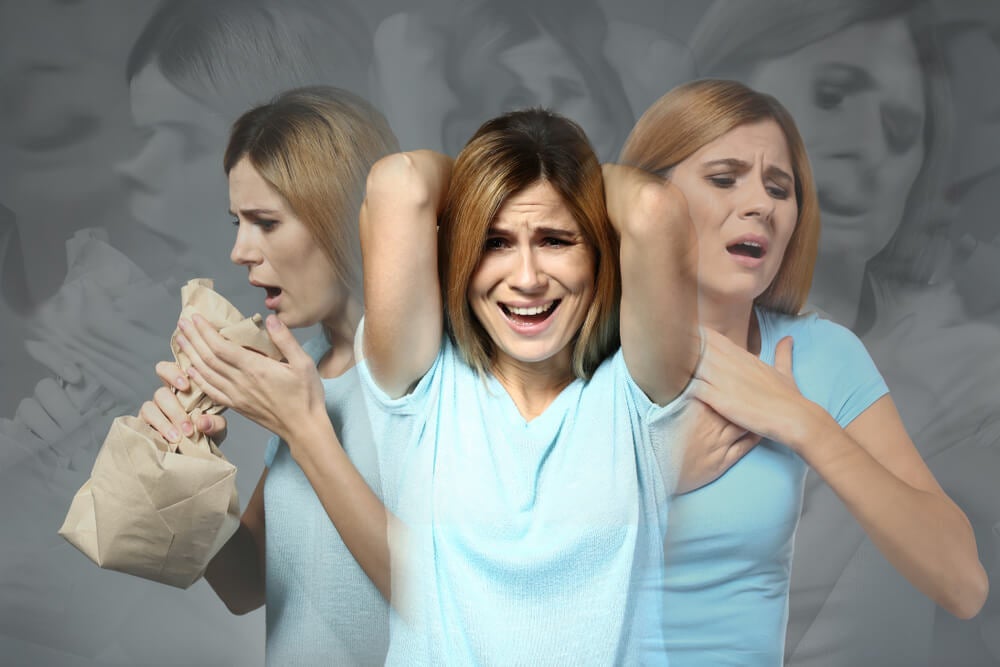Physical symptoms of depression are accompanied by psychological symptoms, however, it is common for many people to pay attention to headaches or back pains, insomnia, fatigue, etc.
The physical symptoms of depression are one way our brain warns us that something is wrong. This complex disorder not only alters mood and thoughts.
- If there is one aspect in common.
- It is the impact it has on our body.
- Bringing us pain.
- Fatigue.
- Inflammation.
- Trouble sleeping.
- Etc.
- Few conditions change our whole being so intensely.
Mental pain exists and is really responsible for many of our physical illnesses. However, it seems easier to say that we have back, head or stomach pain than to say aloud something as dramatic as “My life hurts. “there’s one thing we know, is that our reality is often quite painful.
Failures, losses, disappointments, not knowing what to do or how to react to something causes suffering. In addition, it is common to experience deep, shapeless emotional distress with no specific origin, a persistent discomfort that is not known how to explain. or a specific trigger.
Depression, as we see, has a thousand shapes and so many reliefs that it is like a fingerprint, no two are the same.
It is common, for example, this grueling combination in which anxiety mixes with depression, that is when patients generally define this condition as frightened and extremely fatigued, such as wanting to be alone and fearing loneliness at the same time, such as wanting to flee. and feel paralyzed at the same time.
Living with depression or any other disorder is not easy for anyone, however, delving into the anatomy of these conditions is very necessary to better understand what we are dealing with.
If you know someone with depression, never ask them why they do. Depression has no explanation, there are no answers, there is nothing you have done wrong and so you must justify yourself to others. Is depression like time? -Stephen Fry-
Depression hurts. It could be defined in several ways: paralysis, negative or even harmful thoughts, anxiety, fear, sadness, apathy, discouragement, etc.
However, it is not common to hear this definition in the mouth of someone who reveals that depression is primarily a pain, a pain in which physical (as well as emotional) suffering is real.
Studies such as that conducted at Texas Medical University in the United States in 2004 confirm this same information: physical symptoms are common in depression and, in fact, all of these symptoms manifest themselves in pain or organic alteration.
Then, as Dr. Madhukar H. Trivedi, responsible for the above-mentioned work, reveals, most patients go to health centers with head, back or sleep or digestive problems without knowing that all these sensations are physical symptoms of depression.
Next, we’ll look at these more common symptoms
Everything weighs, everything hurts, the body becomes slow. It’s like living in an oppressive wetsuit. This is certainly one of the characteristics that most people with depressive disorder experience.
At the same time, as Dr. Steven Targum, director of Boston Hospital in the United States, explains in one study, depressed people don’t even get restful sleep, and even if they sleep for 12 hours, they will still feel exhausted. .
If we had to talk about the classic pain associated with depression, back pain would be present. This discomfort even overcomes headaches. Now, to answer the reason for this relationship, we can cite a study from Emory University, USA. USA, Completed in 2016:
Another physical symptom of depression is our pain limit, so everything is painful, a scratch, a slight clap, temperature changes, different clothing fabrics, etc. Skin and our receptors are more sensitive. This way we have suffered more.
With depression, digestive changes are common
As Harvard University research suggests, we must not forget that there is an intimate relationship between our brain and the digestive system.
Factors such as stress, anxiety, fear, anxiety and sadness cause a number of changes ranging from the esophagus to the colon.
This data is curious. Another of the physical symptoms of depression is the perception of contrast, it is a small vision dysfunction in which the person has difficulty concentrating on things, in addition to the increasingly blurred vision, there is also a slight difficulty to differentiate the white of the black.
Studies such as Harvard University indicate that when someone is depressed, the world becomes more monochromatic and, above all, the blue and gray colors become stronger.
This is a very interesting fact that many patients who suffer from this psychological condition coincide.
In conclusion, as we have seen, the physical symptoms of depression are varied. However, it should be remembered that this series of drawbacks or peculiarities must be linked to a number of emotional and cognitive alterations to constitute the clinical picture of depression.
The healthcare professional must decide the type and how to deal with the disease. We must remember, in turn, that whatever kind of depression we have, they are all treatable.
The moment we feel an improvement, most of these physical symptoms go away, that’s when our minds are at peace and our bodies stop screaming to get carried away by our emotional well-being.

